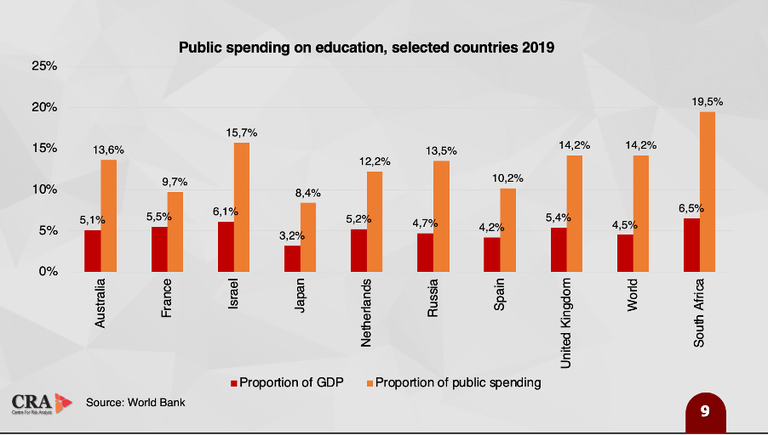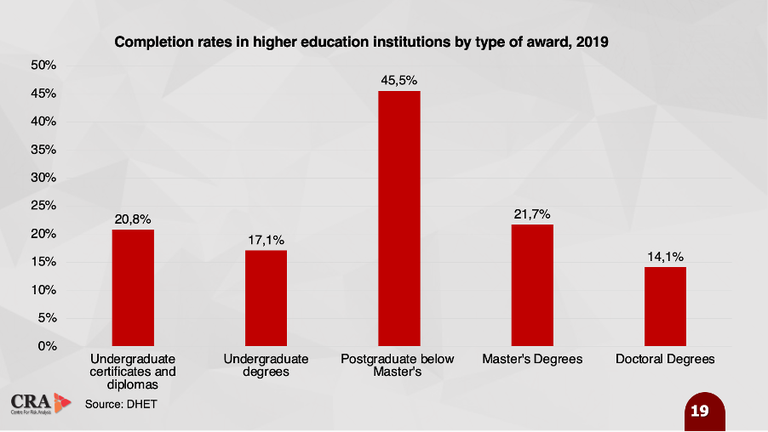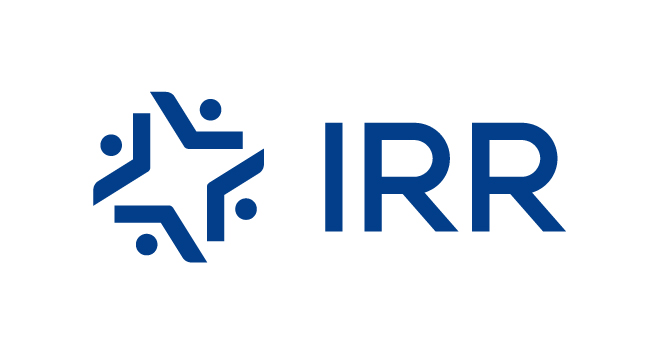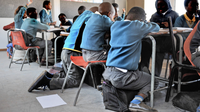Hard truth about the education crisis in South Africa
There isn’t a day that goes by where South Africans aren’t confronted by yet another ‘crisis’, whether in unemployment, healthcare, electricity, or education. Every year however, in January, the crisis of education is glossed over with the announcement of the previous year’s Matric results.
The usual announcement ceremony involves the Minister of Basic Education, Angie Motshekga – who has been in the role since 2009 – mulling over the results of the previous year and flaunting the top achieving students from across the country. Highlighting the success of our best and brightest students is good for the country’s morale, showing what is possible despite state of basic education in the country – a useful smokescreen.
The unfortunate reality is that the ability to scale-up these successes is made inordinately more difficult due to the desperate state of basic education in South Africa, which is in a crisis. But what does an ‘education crisis’ really look like?
Setting the crisis stage
To frame the nature of the crisis let’s consider how much is spent on education. Of course, if not enough was being spent on it then that would be an instant red flag. But this is in fact the opposite in South Africa’s case. The share of budgeted expenditure - government spending that is – for 2022/23 will be higher for education than any other portfolio, a whopping 19.9%, totalling R429.7 billion. To put this into perspective, South Africa spends more of its budget on education than countries including France, the UK and Australia and almost double that of Spain.

Allocation of funds to education, it would seem, is prioritised by the government. Although, we get very little bang for our back in educational outcomes. And the outcomes, are harrowing.
Only 3 out of 10 schools have a library.
Libraries are essential and safe spaces for children to do schoolwork, research and leisure reading. While there are public libraries that learners go to, they are often far for learners to travel to and many have been vandalised.

787.5% - The increase in the number of pupils enrolled in private schools in the Eastern Cape since 2000.
Independent schools still have far fewer pupils than public schools, but this sharp increase (174% nationally) in private school enrolment attests to the diminishing quality of education on offer at public schools. The country is fortunate that there is an environment that enables private schools to flourish, however it does reveal that parents are increasingly looking away from government funded schools towards more affordable and better quality private alternatives.
Less than half of the pupils who started Grade 1 in 2010 passed Matric in 2021.
Next time you watch Minister Motshekga smiling gleefully announcing the National Senior Certificate Matric result pass rate (Class of 2021 at 76.4%), consider that this cohort that passed makes up less than half the pupils that began their schooling in Grade 1. Put another way, imagine two eager 7-year-olds sitting next to each other on the first day of school. Only one of those would then go on to pass their final Matric examinations.

People with a higher level of education have a better opportunity at getting a job and taking these high dropout rates into account, we begin to see how failing public education feeds into South Africa’s unemployment crisis.
Only 1 in 5 public higher education students complete their undergraduate certificate, diploma or degree.
The drop-out trend continues into higher education, as even the brightest matriculants struggle when tackling an undergraduate university programme, with less than a quarter of students completing them. The standard and quality of basic education then, is setting up pupils for failure by inadequately equipping them for the challenges and standards of tertiary education. An additional struggle is funding, with many students having to dropout despite the government’s strained National Student Financial Aid Scheme (NSFAS). NSFAS provisionally funded 1.2 million students for the 2022 academic year. A further 286 000 were rejected.

Averting the crisis avalanche
Education, as a fundamental aspect of a successful economy, deserves to be allocated the R429.7 billion that it receives in the government budget. However, not only does the spending of this budget need to be scrutinized but the education system more broadly needs widescale reforms. Parents need to be empowered through active School Governing Bodies (SGBs) and the influence of militant trade unions reduced. The implementation of a voucher-based system could be a viable budget distribution scheme that would give communities and parents more control over their children’s education and improve teaching standards through greater competition between schools.
The problem with a crisis is that often one tends to lead to another and South Africa’s education crisis is a snowball that morphs into a poverty entrenching avalanche. Unless the necessary reforms are implemented. the country’s economy will continue to stagnate, sky-high unemployment levels will continue leading to an escalation of violent protests and xenophobia – at the very least.
Without urgent attention given to educational reform, poverty will persist, aspirations crushed and dignity destroyed. Perhaps after more than 12 years on the job, it’s time Basic Education Minister Motshekga took accountability and acknowledged that she and her government is failing. It’s time for fresh ideas that will help build a new tomorrow.
The data cited in this article is courtesy of an exclusive client report and webinar from the Centre for Risk Analysis.
Cover image source available here.

